At the battle of Waterloo, it was reported that Napoleon Bonaparte’s hemorrhoids had swollen up so much so that he could not mount his horse to survey the battlefield. Thus hemorrhoids – had been instrumental in changing the course of history! Indeed, hemorrhoids continue to be one of the most common problems that patients consult their doctors for. The worldwide incidence of hemorrhoids is reported to be 4-5% and afflicts both men and women.

What are hemorrhoids?
We now know that hemorrhoids are anal cushions filled with blood vessels in the anus. These anal cushions function to help in control of continence and prevent leakage of stool. When these anal cushions enlarge or get swollen, they result in symptoms like blood in the stool, severe pain or a lump popping out at the anus.
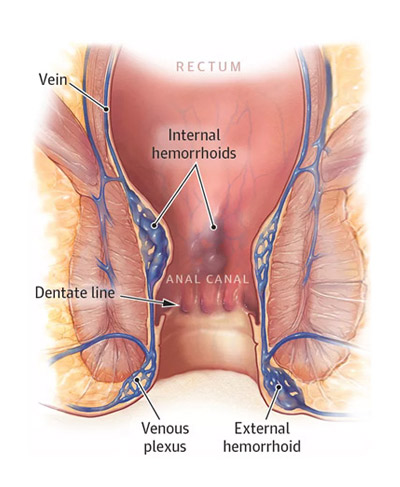
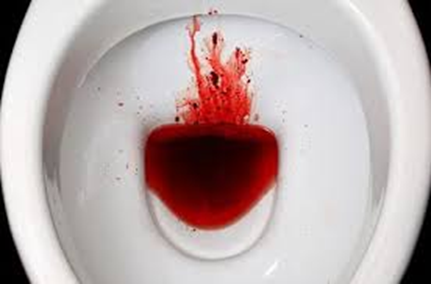
What are the symptoms of hemorrhoids?
The most common complaints are bleeding in the stool, pain on passing motion or a lump at the anus. Patients may also complain of itch and discharge from the anus. This usually results from the internal hemorrhoids enlarging and popping out or prolapsing. The exposed hemorrhoid is subjected to trauma and bleeds and thrombosis (blood clots forming in the cushion) giving rise to severe pain and difficulty sitting.
It is important to understand that other conditions like colon cancer or other bowel conditions can cause such symptoms and mimic hemorrhoids – and your doctor may recommend Colonoscopy to exclude these problems.
Grading Hemorrhoids
Hemorrhoids are divided into different grades for the purpose of treatment.
- Internal hemorrhoids – occasional bleeding
- Internal hemorrhoids that prolapse but return into the anal canal
- Prolapsing hemorrhoids that need to be pushed back into the anus
- Prolapsing hemorrhoids that cannot be returned into the anus
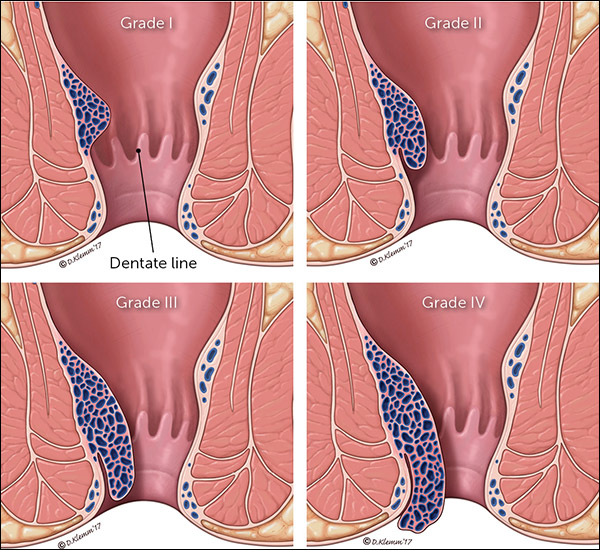
Treatment of Hemorrhoids:
The natural history of hemorrhoids is that they wax and wane. There may be flares but these often subside with time. Mild or early grades of hemorrhoids respond well to changes of diet and medication. Consuming adequate fluid and fibre in the form of fruits and vegetables can result in regular bowel movements and less straining at stool. Topical creams and suppositories like Proctosedyl can relieve some swelling and discomfort and provide lubrication when passing a bowel movement. Daflon is a flavonoid which also helps to stop bleeding and reduce the swelling in hemorrhoids.
Minor Surgical Procedures for Hemorrhoids
When symptoms persist despite conservative treatment, further measures are required. For grade 1 and 2 hemorrhoids, procedures like injection, ligation or HET (Hemorrhoid Energy Therapy) are very effective. Injection works best for internal hemorrhoids which bleed but do not prolapse. While ligation involves placing a tiny rubber band at the base of the hemorrhoid and tying it off – so it drops off after a couple of days. Most of these can be done as a day surgery procedure and you do not need to stay in hospital. We will assess the severity of your condition and recommend the procedure that will work best for you.
Hemorrhoid Energy Therapy (HET)
Hemorrhoid Energy Therapy utilizes Bipolar diathermy (a localized current that seals the blood vessels in the anal cushion) to treat the hemorrhoids.
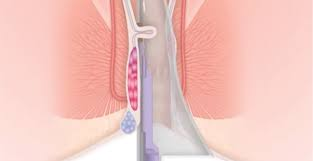

Surgery for Hemorrhoids
Surgery is usually reserved for large prolapsing hemorrhoids that cannot be treated with less invasive measures.
Conventional Hemorrhoidectomy
Conventional hemorrhoidectomy involves removing the hemorrhoidal cushions along with any skin tags which may be present. This procedure is very effective but leaves wounds at the anus which can take up to 6-8 weeks to heal and cause significant discomfort or pain. The main advantage about this operation is the hemorrhoidal cushion will not grow back once removed. Your body will however try to compensate for the loss of that anal cushion – and so secondary cushions may develop over time which can sometimes cause problems and a recurrence.
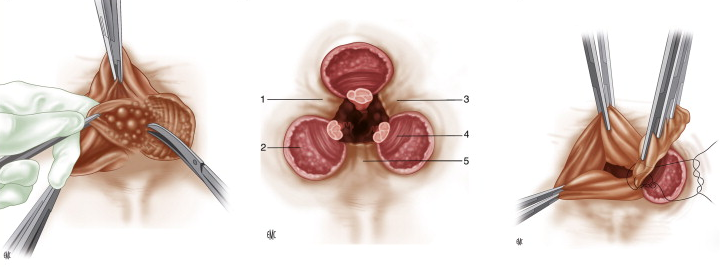
Stapled Hemorrhoidectomy (Longo Procedure)
In order to reduce the pain associated with hemorrhoid surgery, Dr Antonio Longo developed a technique of treating the hemorrhoids using a circular stapler. The procedure involves drawing the hemorrhoidal cushions into the stapler, and by firing the device, the hemorrhoids are partially removed and their blood supply interrupted. The staples close the internal wound – thus speeding up the recovery and reduces the pain from the procedure. The main disadvantage of this procedure is the inability to deal with external skin tags.

Transanal Hemorrhoidal Dearterialization
This procedure involves ligating the feeding blood vessels to the hemorrhoid – using a Doppler ultrasound probe. This procedure is usually performed under general anesthesia and is more invasive than the HET method. It does not work well for large prolapsing hemorrhoids.
Summary:
Anal pain and bleeding are common symptoms of hemorrhoidal disease, but it is important to rule out other conditions like colorectal cancer. Treatment should be tailored to the severity of the disease and we would happy to examine you to help you find the best options for your condition.

